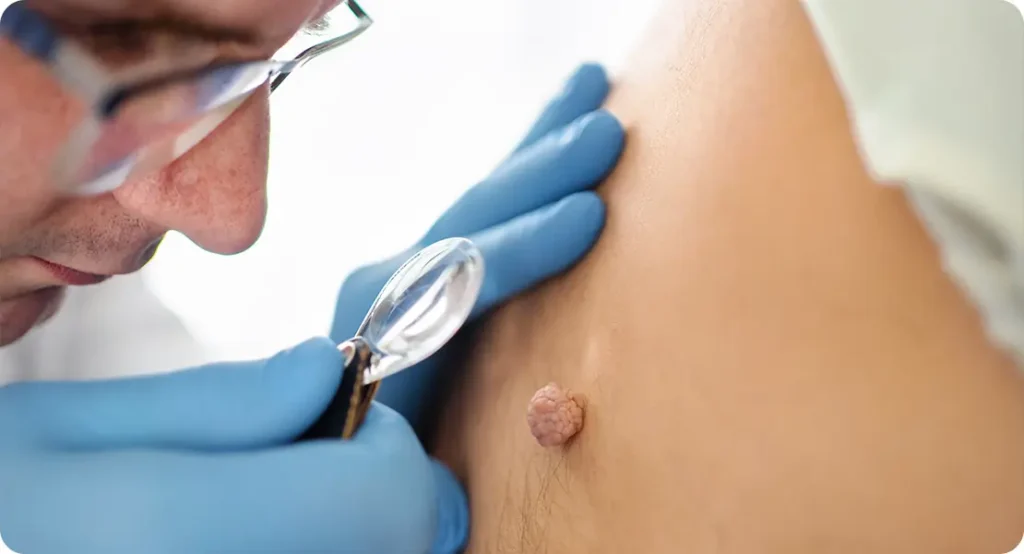If you’ve noticed your skin behaving differently over the past year or so whether it’s becoming more reactive, breaking out unexpectedly, or showing signs of dryness or redness you never had before you’re not alone.
Across the capital, more Londoners than ever are booking consultations with dermatologists to get to the bottom of skin and hair concerns that seem to be increasing in frequency and severity. From busy professionals and university students to parents and retirees, people from all walks of life are seeking expert advice for issues they may have brushed off in the past.
In 2025, dermatology clinics throughout London are noticing some clear and consistent patterns. Adult acne is no longer just a teenage problem it’s becoming a persistent issue well into people’s 30s and 40s. Hair thinning and hair loss are affecting younger adults, sometimes even appearing in the early 20s. Exposure to rising levels of pollution and environmental stress is making sensitive skin more common, and there’s also been a marked increase in patients proactively seeking skin cancer screenings, particularly after a surge in sun damage cases during recent hot summers.
So, what’s behind these shifts? And more importantly, how are London’s dermatologists adjusting their treatment strategies to help people feel confident in their skin again? The answers lie in a combination of lifestyle factors, environmental triggers, and a growing willingness to seek help sooner rather than later. Advances in diagnostics and treatment options also mean that dermatologists can offer more targeted, effective care than ever before. From high-tech imaging tools to customised skincare routines, the focus is shifting from one-size-fits-all fixes to tailored solutions based on each individual’s skin story. Let’s take a closer look at the most common issues surfacing this year and the innovative, personalised care being offered in response.
Adult Acne Isn’t Just a Teenage Issue Anymore
One of the most noticeable shifts dermatologists are observing in London in 2025 is the rising number of adults seeking help for acne. While breakouts have long been associated with adolescence, it’s now increasingly common for people in their 20s, 30s, 40s and even 50s to experience stubborn spots, particularly around the jawline, cheeks, and chin.
So, what’s behind this surge in adult acne?
Dermatologists point to several overlapping factors that are contributing to this trend:
- Chronic stress: Whether it’s related to work, family responsibilities, or the fast pace of city life, ongoing stress can disrupt hormone levels and increase oil production, leading to clogged pores and inflammation.
- Hormonal fluctuations: Adult acne is often linked to hormonal imbalances. This includes natural hormonal shifts during the menstrual cycle, perimenopause, and menopause, as well as side effects from contraceptives or hormonal therapies.
- Environmental triggers: London’s air pollution can wreak havoc on the skin. Fine particles and toxins in the air can settle on the skin’s surface, clogging pores and triggering breakouts especially for commuters or those who spend a lot of time outdoors.
- Skincare overload: Many people unknowingly overdo their skincare routines, layering multiple serums, acids, and treatments that may not be compatible. This can damage the skin barrier, making the skin more prone to irritation and breakouts.
If you’ve found yourself breaking out more often or dealing with acne that just won’t go away, know that you’re far from alone. Dermatologists are increasingly tailoring treatment plans that take a holistic and personalised approach.
Here’s what these modern acne management plans often include:
- Prescription topicals that are barrier-friendly, such as low-dose retinoids, anti-inflammatory agents, or azelaic acid.
- In-clinic treatments, like LED light therapy, medical-grade facials, and gentle chemical peels tailored for adult skin.
- Lifestyle and skincare coaching, helping patients understand which ingredients to use, how to avoid over-exfoliating, and why simplifying a routine can often lead to better results.
- Hormonal testing and support, particularly for women dealing with acne that worsens during certain phases of their cycle or around menopause.
The good news is, adult acne is treatable and with the right support, clearer skin is well within reach. If you’re struggling, reaching out to a qualified dermatologist can help you take the guesswork out of your skincare routine and finally get the results you’re after.
Hair Loss Tied to Stress and Hormonal Changes

Another growing concern that dermatologists in London are hearing more about in 2025 is hair loss particularly among younger adults and women. What was once seen as a concern primarily for older men is now affecting a much broader demographic, and people are becoming more proactive about seeking help early on.
Since the pandemic, cases of stress-related hair thinning have soared. Dermatologists frequently diagnose telogen effluvium, a condition in which more hair than usual enters the resting (telogen) phase of the growth cycle and sheds. This is typically triggered by a physical or emotional shock to the system, such as illness, surgery, extreme stress, or even significant dietary changes.
At the same time, hormonal shifts are playing a major role in both men and women experiencing noticeable changes in hair density.
Here are some of the most common contributors:
- Chronic stress: Long-term stress continues to be one of the biggest culprits, not only impacting hair growth cycles but also contributing to poor sleep, dietary imbalances, and inflammation all of which affect hair health.
- Post-COVID recovery: Many patients who had COVID-19 even months or years ago still experience delayed hair shedding as part of the body’s recovery process.
- Pregnancy and postpartum changes: Women often experience thick, healthy hair during pregnancy, followed by sudden and distressing shedding in the months after giving birth.
- Perimenopause and menopause: Hormonal changes during this phase of life can lead to more diffuse thinning, often around the crown or temples.
- Polycystic ovary syndrome (PCOS): PCOS often causes elevated androgen levels, which can trigger thinning hair on the scalp while increasing facial or body hair adding to the emotional toll.
The good news? You’re not powerless. Advances in dermatology mean there are now more treatment options than ever, and early intervention often leads to better outcomes.
Common treatment options now include:
- Prescription topical treatments, such as minoxidil or anti-androgen solutions.
- Oral medications, including hormonal therapies that can help balance underlying imbalances.
- Regenerative therapies, like PRP (platelet-rich plasma), which uses your body’s own growth factors to stimulate hair follicles.
- Lifestyle and nutritional support, including guidance on supplements, stress management techniques, and diet adjustments to improve hair health.
- Advanced diagnostic tools, like scalp imaging and blood tests, to uncover root causes quickly and build personalised plans.
Hair loss can be emotionally difficult, but with the right support, many people see noticeable improvement within months. Dermatologists are encouraging patients not to wait early diagnosis is key to slowing or even reversing shedding.
Sensitivity From Pollution and Skincare Overload
If your skin has become more reactive than usual flushing easily, stinging when you apply products, or developing dry, flaky patches you’re definitely not alone. In fact, skin sensitivity is becoming one of the most common complaints dermatologists in London are hearing in 2025.
A major culprit? The city environment itself. Air pollution, particularly from heavy traffic and construction, is constantly bombarding the skin with microscopic particles and toxins. These pollutants can weaken the skin’s natural barrier, making it less able to protect itself and more prone to irritation.
And that’s just one piece of the puzzle. Many people are also unintentionally harming their skin by doing too much in their routines. In the quest for a flawless glow, it’s become common to layer multiple active ingredients like exfoliating acids, retinoids, and vitamin C without giving the skin time to adapt or recover. The result? A compromised barrier that’s red, sore, and perpetually inflamed.
Dermatologists say they’re now treating more patients with:
- Chronic redness or flushing, particularly on the cheeks and around the nose
- Burning or stinging sensations after applying skincare products
- Dry, flaky, or tight-feeling skin that doesn’t improve with moisturisers
- Increased breakouts, ironically caused by barrier disruption rather than oil or bacteria
So, what’s the solution? Clinics are shifting towards a more restorative and preventative approach.
Here’s how dermatologists are helping patients calm and protect sensitive skin:
- Barrier-repairing skincare, using ingredients like ceramides, niacinamide, panthenol, and squalane to strengthen the skin’s defences
- Medical treatments such as LED therapy for inflammation or prescription creams for skin conditions like rosacea
- Simplified routines, recommending fewer products and more focus on hydration and protection
- Pollution protection strategies, including antioxidants to neutralise free radicals and physical barriers like mineral sunscreens
- Lifestyle tweaks, like avoiding hot showers, managing stress, and using humidifiers during dry winter months
If your skin has become unpredictable or seems to react to everything, know that your skin isn’t “too sensitive” it’s just trying to tell you something. With expert guidance, it’s absolutely possible to restore balance and build resilience over time.
Rising Awareness of Skin Cancer Checks

One of the more encouraging dermatology trends emerging in 2025 is a noticeable shift in public awareness around skin cancer specifically, the importance of early detection. More people in London are no longer waiting until a mole “looks really bad” or a lesion begins to itch or bleed. Instead, they’re proactively booking skin exams and full-body mole checks, often as part of their annual health routine.
While skin cancer rates are unfortunately still climbing largely due to cumulative sun exposure from years past this rise in early detection is making a real difference in outcomes. Dermatologists are now catching more cases of melanoma, basal cell carcinoma, and squamous cell carcinoma at much earlier, more treatable stages.
Why the shift in behaviour? A few reasons stand out:
- Better public education: Campaigns around sun safety, SPF use, and mole monitoring have helped people understand the risks and warning signs.
- Increased access to screenings: Many clinics now offer quick, affordable mole checks and use digital imaging tools for ongoing monitoring.
- A rise in remote work and teledermatology: These trends have encouraged more people to prioritise health, including skin health, during their flexible schedules.
- Greater media coverage: High-profile cases and social media awareness have made skin cancer a more widely discussed and less taboo topic.
Dermatologists are particularly encouraging people to look out for:
- New or changing moles, especially those that are asymmetrical, have irregular borders, or vary in colour
- Sores that don’t heal, or patches of skin that are scaly, crusty, or bleed easily
- Lesions in unexpected places, such as the scalp, soles of the feet, under nails, or in areas not commonly exposed to the sun
To support this rising demand, clinics across London are increasingly offering:
- Mole mapping technology, which captures high-resolution images of your skin to track changes over time
- Full-body skin exams, performed by dermatologists trained to spot subtle signs of skin cancer
- Biopsy and pathology services on-site, allowing for faster diagnosis and treatment planning
- Preventative advice, including guidance on proper SPF use, how to check your own skin at home, and what to watch for between appointments
If you’ve been meaning to get a mole checked or haven’t had a skin screening in years, now is the time to act. Early detection doesn’t just improve treatment success it could save your life.
How London’s Urban Lifestyle Affects Your Skin

Life in London has always had its perks vibrant culture, career opportunities, and endless things to do but it also comes with some unique challenges for your skin. In 2025, dermatologists are increasingly connecting the dots between urban living and a rise in chronic skin concerns.
From pollution-heavy commutes to stress-fuelled schedules, city life affects your skin in ways you might not even realise. Here’s how:
- Long commutes and exposure to air pollution: Whether you’re walking to the Tube, cycling through traffic, or sitting in congested areas, your skin is constantly exposed to fine particulate matter (PM2.5), nitrogen dioxide, and other pollutants. These microscopic toxins can penetrate pores, accelerate ageing, and worsen conditions like acne, eczema, and rosacea.
- High stress levels: The relentless pace of city life can disrupt your hormones and elevate cortisol levels, which may trigger inflammation, dullness, oil imbalance, and even hair loss. Stress also tends to exacerbate chronic skin conditions like psoriasis and seborrheic dermatitis.
- Lack of time for skincare and self-care: Busy workdays, family commitments, and social events often leave little time for proper skin maintenance. Inconsistent routines like skipping sunscreen, not removing makeup, or overusing active ingredients in a rush can all take a toll over time.
Recognising these pressures, dermatologists in London are adapting their services to better suit the demands of city dwellers. Today’s focus is not only on treating skin concerns but on making skincare more accessible, preventative, and flexible.
Here’s how clinics are meeting Londoners where they are:
- Express in-clinic treatments like lunchtime facials, LED therapy, or chemical peels that can be done in under 30 minutes
- Teledermatology consultations via secure video, making it easier to get expert advice without rearranging your day
- Tailored skincare recommendations designed for minimalism less about 10-step routines, more about efficient, barrier-supporting care
- Preventative strategies such as early skin cancer screenings, stress-related skin support, and education on pollution defence
The message is clear: you don’t need to overhaul your lifestyle to have healthy skin. With the right guidance and small, consistent habits, it’s entirely possible to thrive in the city and keep your skin balanced, resilient, and radiant.
Final Thought: You Deserve Expert Skin and Hair Care
If you’ve noticed changes in your skin or hair, you’re definitely not alone. These trends are affecting people across London, regardless of age or background. Whether you’re dealing with persistent breakouts, sudden hair loss, chronic sensitivity, or concerns about moles, there are effective solutions and supportive professionals ready to help you.
Today’s dermatologists understand the realities of city living and offer treatments that fit into your life not just your calendar. From early detection tools to personalised skin and hair care plans, expert support is more accessible than ever. Don’t wait until a concern becomes urgent proactive care can make all the difference. You can get in touch with us to book a consultation with a qualified dermatologist in London and take the first step towards healthier, more confident skin. You can get in touch with us to book a consultation with one of our expert dermatologists in London and get personalised advice to help your skin look and feel its best.
References:
- Chang, J., Nock, M.R., Cohen, J.M. & Bunick, C.G., 2023. Acne accounts for an almost 2.5‑fold higher proportion of dermatology visits among adult females compared to adult males in the United States: A study of the national ambulatory medical care survey from 2002–2016. PLOS ONE, 18(9), e0290763. https://doi.org/10.1371/journal.pone.0290763
- Bhate, K. & Williams, H.C., 2013. Epidemiology of acne vulgaris. British Journal of Dermatology, 168(3), pp.474–485. https://pmc.ncbi.nlm.nih.gov/articles/PMC7147122/
- Wu, S. et al., 2022. Air pollution and inflammatory skin disease: evidence from epidemiologic and experimental studies. JAMA Network Open https://jamanetwork.com/journals/jamanetworkopen/fullarticle/2821171
- Cancer Research UK, 2024. Skin cancer cases reach all‑time high. [online] news.cancerresearchuk.org. Available at: https://news.cancerresearchuk.org/2024/05/27/skin-cancer-cases-reach-all-time-high/
